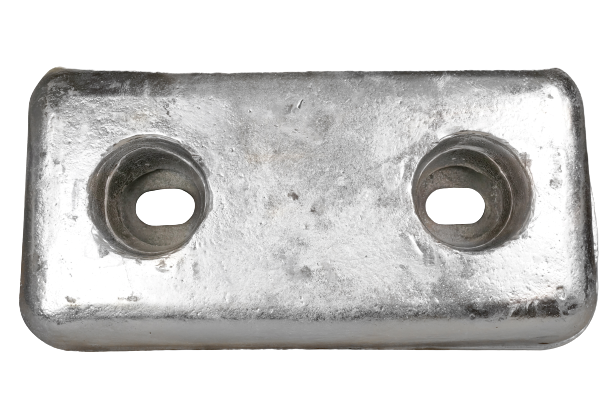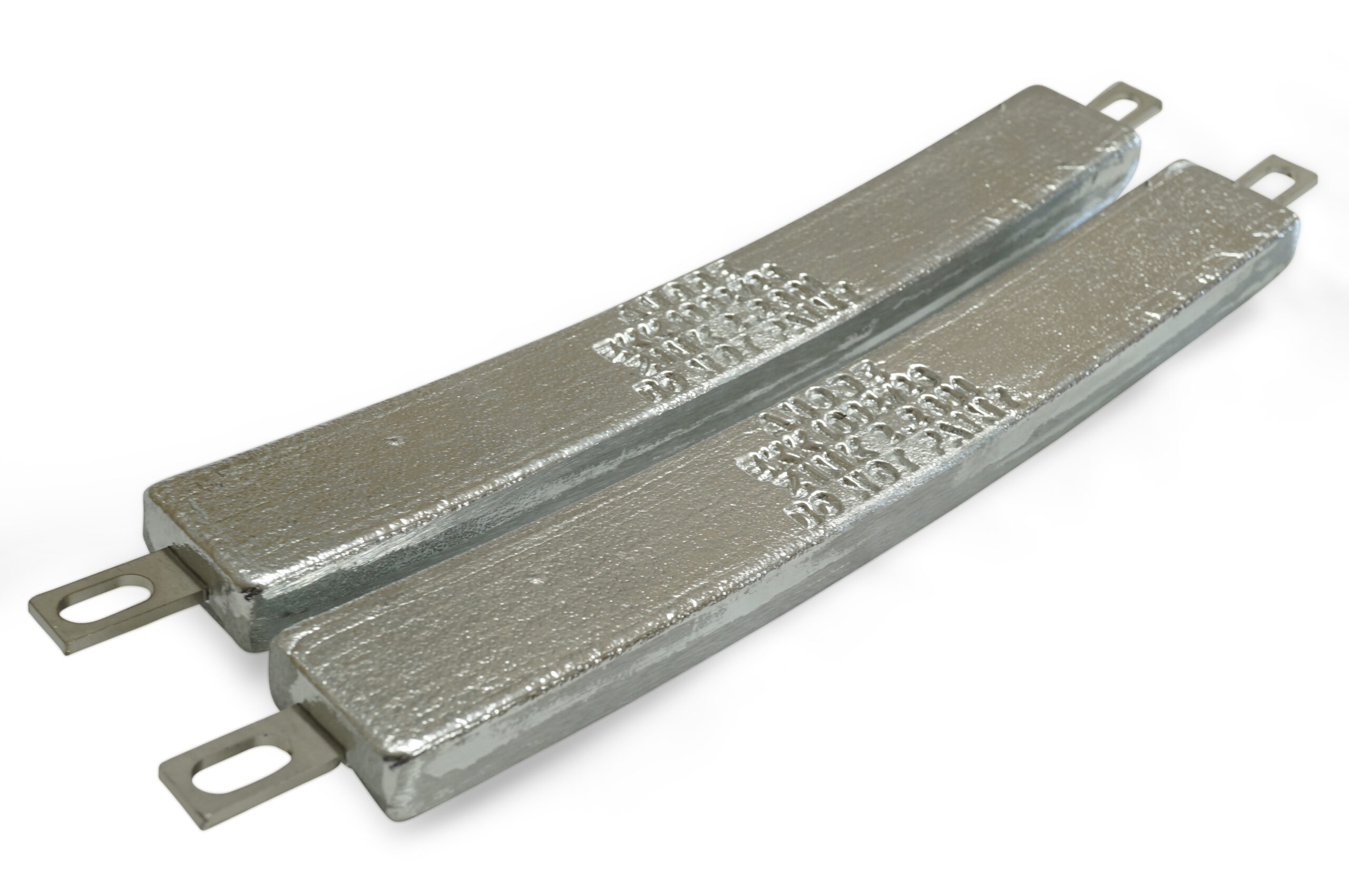Cathodic corrosion protection with sacrificial anodes
Galvanic corrosion is the decomposition of metal under the influence of an electric current. If iron or steel components come into contact with conductive liquid (electrolyte), the oxygen dissolved in the water or humid air (electrolyte) attacks the metal. Electrons are removed from the metal and the positively charged metal ions are dissolved, corroding the metal.
Cathodic corrosion protection – also known as electrical or galvanic corrosion protection – plays an essential role on board ships and offshore installations when it comes to preventing galvanic corrosion. In cathodic corrosion protection, the metal to be protected acts as the cathode, the less noble metal as the anode and the water as the electrolyte. The less noble sacrificial anode metal has a greater tendency to give up its electrons to the oxygen dissolved in the water, i.e., it oxidises and goes into solution. The sacrificial anode is used up over time and must be replaced to maintain the corrosion protection.
The function of a sacrificial anode is therefore based on the principle of electrochemical reaction. When two different metals come into contact with water, an electrical potential is created. The metal with the lower electrical potential is preferentially corroded, while the other metal is protected.
Sacrificial anodes therefore play an important role in maintaining the efficiency of ships. A corroded surface can increase hydrodynamic resistance and thus fuel consumption. By regularly replacing and monitoring the sacrificial anodes, ships can be operated more efficiently and in a more environmentally friendly manner.
Sacrificial anodes are an indispensable component for preventing corrosion damage and extending the service life of ships. Their use helps to ensure the safety, reliability and efficiency of ships and thus also to reduce the environmental impact of shipping.
What are the advantages of cathodic corrosion protection?
- Reduction of corrosion damage to ship hulls, pipelines and metallic parts on ships and offshore facilities
- Increased service life of ships and offshore facilities
- Increased efficiency of ships due to lower fuel consumption
- Automated process that requires minimal control by personnel
- Simple installation as welded or drilled version
- Without the addition of chemicals
Sacrificial anodes made of zinc, aluminium or magnesium
The sacrificial anodes used are anodes made of metal with a lower potential than that of the hull, for example zinc, aluminium or magnesium. In cathodic corrosion protection with sacrificial anodes, the metal to be protected is conductively connected to the sacrificial anode. As a conductive medium, water enables the transport of charged particles and thus closes the circuit.
The sacrificial anodes are positioned in such a way that they cover as large an area of the metal to be protected as possible. The galvanic effect causes electrons to flow from the so-called sacrificial anode to the cathode, the metal that is to be protected. The sacrificial anodes gradually dissolve. To ensure constant protection, the sacrificial anodes are regularly checked for wear and replaced if necessary.
Sacrificial anodes are essential in shipping, as ships are constantly exposed to the aggressive marine environment. The salt water and the different electrical potentials of the various metals on board favour corrosion. By using sacrificial anodes, corrosion is channelled to the anodes and the ship's material remains protected.
Are you looking for the right sacrificial anode?
Our sacrificial anodes are available as welded or drilled versions in the metals zinc, aluminium and magnesium.
Send us your enquiry with approximate dimensions and weight so that we can select the right sacrificial anode for you.


